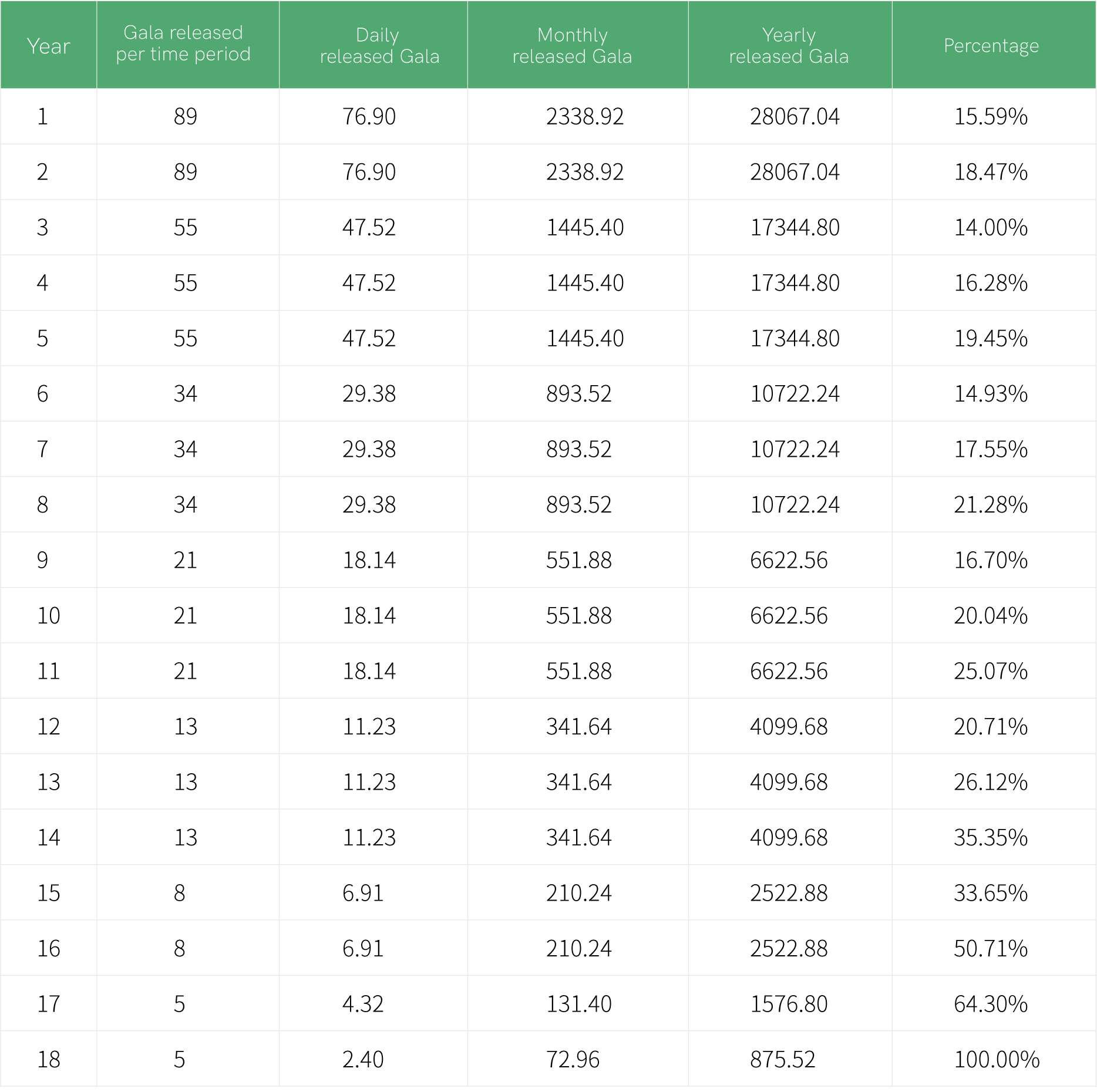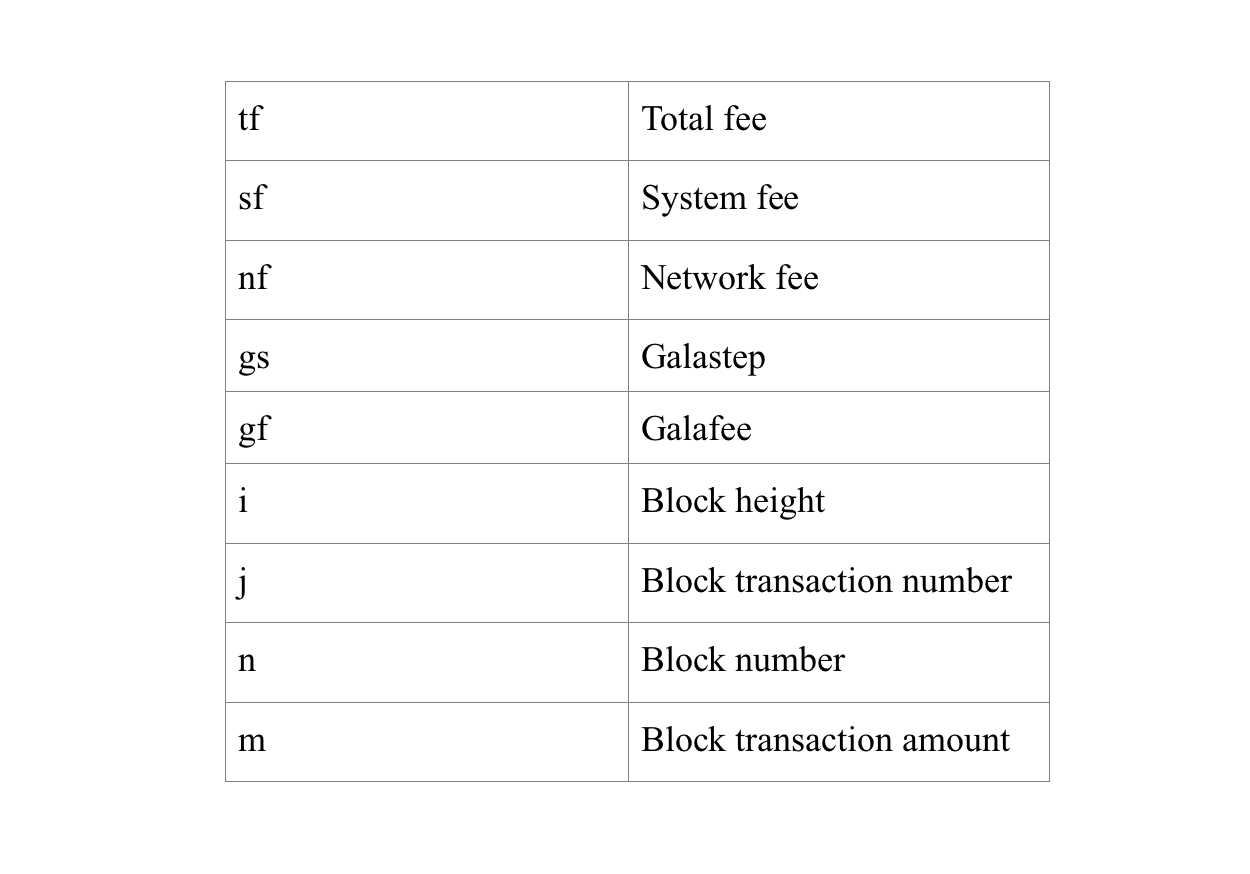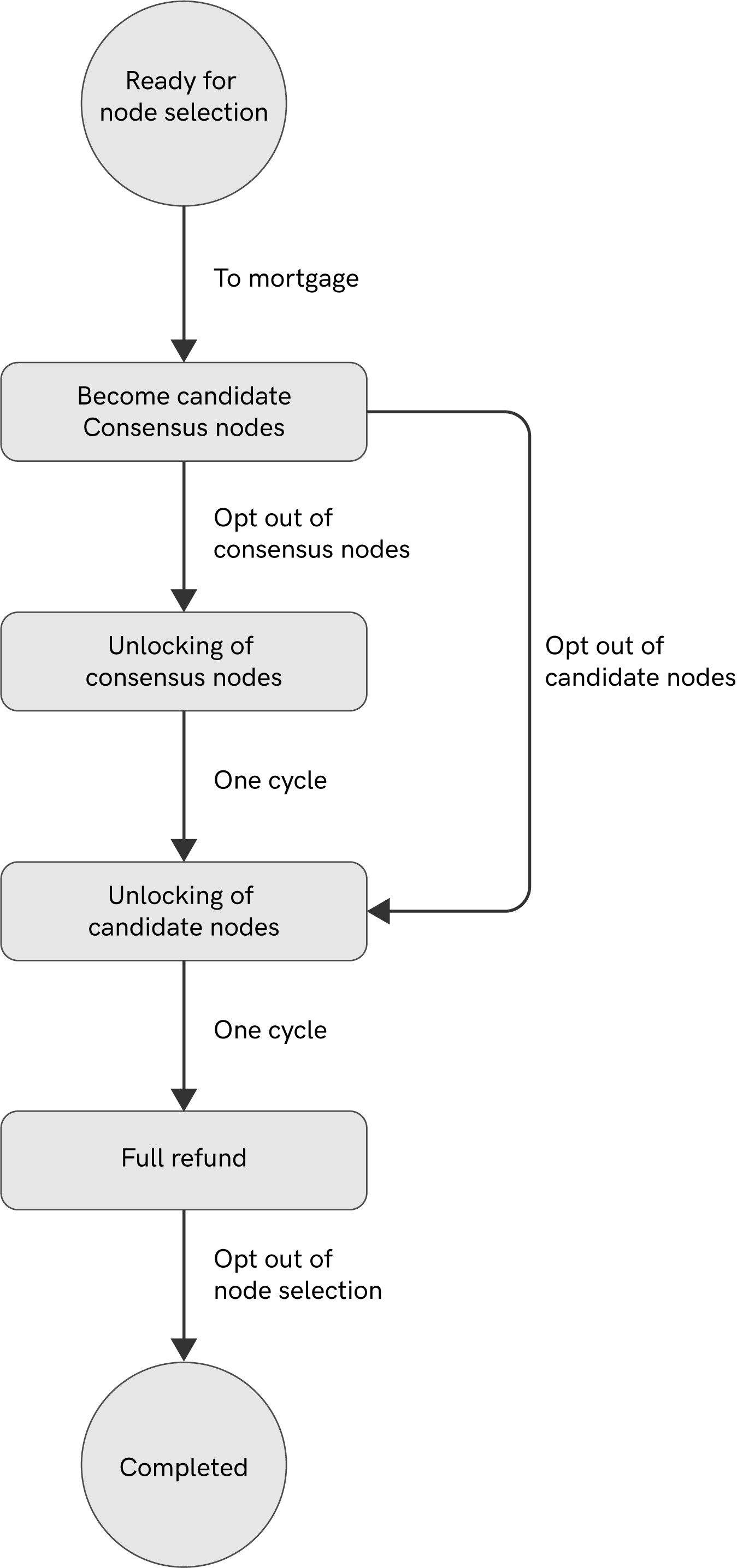

Tool
 Documentation
Documentation
Zeepin Economic Model
- Dear Zeepin supporters and community members,
- Greetings!
- The Zeepin incentive system is one of the important economic models in the ecosystem. A well-designed economic model reduces the operating cost of the system, distributes the network revenue evenly, improves the stability and security of the system, and brings the development of Zeepin ecology into a virtuous cycle.
- With the help of blockchain technology, Zeepin integrates the existing creative industry and its users in order to provide a platform for copyright trading and protection. Therefore, when designing the incentive system, we carefully weigh the interests of multiple parties and have left sufficient room for further development in consideration of subsequent participation of other groups.
- The Zeepin incentive system adopts a mechanism of compensation and leasing. The Zeepin blockchain users will spend the fuel token Gala in exchange for system resources. The Gala consumed by users will be allocated to nodes in the Zeepin Consensus Cluster, while holders of ZPT, the original token, will be able to receive the gradually unlocked fuel token Gala.
- In the Zeepin incentive system, node revenue consists of network revenue and compensation revenue. In order to guarantee the benefits of each node, Zeepin Foundation allocates additional compensation to nodes. The network revenue is directly proportional to the contribution of each node, while the compensation revenue is directly proportional to the locked amount.
- I. Zeepin Galaxy Node System
- There are three types of nodes in the Zeepin Galaxy Consensus Network: Consensus Node (ranked as the top 9 based on mortgages and votes), Candidate Node (ranked as the top 42 based on mortgages and votes), and Backup Node (nodes that have participated in the campaign but have not been elected as a Candidate Node).
- • All ZPT holders are allowed to be a voting delegate or delegate his/her votes to others. They can participate in governing Galaxy Consensus Cluster by delegating their rights to delegates and receive compensation based on the mortgage amount. The delegate is responsible for distributing the revenue from voting delegation;
- • Galaxy Consensus Cluster supports a dynamic network node threshold setting with a starting point of 51, which will be reached through continuous campaign and voting. These network nodes will apply the GBFT-POS consensus algorithm to select nodes of the consensus network. The specific roles of the nodes will be determined according to the mortgaged ZPT ranking. The network will generate 9 Consensus Nodes and 42 Candidate Nodes, while the rest nodes become Backup Nodes.
- • Consensus Nodes are responsible for the implementation of the block consensus and the efficient operation of the network;
- • If any Consensus Node encounters an unrecoverable or longer-term problem, thus hindering the implementation of the block consensus, the highest ranked Candidate Node will be selected and become the new Consensus Node;
- • In the framework of GBFT-POS Consensus, Candidate Nodes will form a network of candidates for the Galaxy Consensus Network. Future versions will support large-scale network deployment;
- • The Galaxy Consensus Cluster can dynamically adjust the size of the network of candidates according to node costs and the business scale on the chain;
- In the early stage, Zeepin Galaxy Consensus Cluster conducts a cycle of consensus network adjustments per 120,000 blocks according to the consensus governance contract. The status of network and Consensus Nodes dynamically determine the length of each consensus cycle time.
- II. Zeepin Galaxy Node Incentive System
- 1.Released GALA Incentives
- In the Zeepin economic model, the total supply of the original token ZPT is 1 billion rounding to 4 decimal places. Correspondingly, the total supply of Gala is 20 billion, of which 2 billion has been airdropped to ZPT holders, and the remaining 18 billion will be gradually released to ZPT holders (the minimum unlock unit is 1 ZPT).
- Total Supply and Distribution of the Original Token ZPT
- Among the initial circulation of 1 billion:
- R&D Cost: 10%
- Founding Team: 20%
- Community Development: 20%
- Community Crowdfunding: 50% (completed)
- Total Supply and Distribution of the Fuel Token Gala
- Among the initial circulation of 100 billion
- Foundation: 50 billion (the locked out will be released annually according to the development)
- Community Development: 30 billion (node development, node incentives, ecological application development, and ecology strategic partners)
- Airdrop to ZPT Holders: 2 billion (completed)
- Annually Released to ZPT Holders: 18 billion
- A ZPT transaction generated on the blockchain triggers a Gala release. The smart contract automatically transfers the released Gala to the initiator and the receiver of the transaction, and the Gala incentive is directly proportional to the ZPT amount they hold.
- In case that transactions at a particular address are not triggered at all, Gala to the address will accumulate until a transaction is triggered, and the accumulated Gala will be issued at once. It is possible to obtain this part of Gala through Claim in the ZeeWallet application.
- The release amount of the 18 billion Gala will be adjusted within time periods, the unit of which is year (31,536,000 seconds). The releasing rule is in accordance with the Fibonacci sequence.
- In order to compensate network nodes and early holders, the release amounts in the first two years are at the highest value. Afterwards, the release amounts will assume a degression tendency. The specific sequence is [89, 89, 55, 55, 55, 34, 34, 34, 21, 21, 21, 13, 13,13, 8, 8, 5, 5]. In about 18 years, all Gala will be released, and no more will be generated.W
- According to this rule of Gala release, the first two years will see a 31.18% release of the total Gala, and the released proportion will be 50.46% after the first four years, which greatly increases the revenue of early holders.
- Assuming a user holds 10,000 ZPTs, in the first year, he will receive 76.9 Gala daily, 2338.9 Gala monthly, and 28067.0 Gala annually.

- 2.Zeepin Network Yield
- In the Zeepin fee system, there are system fees and network fees. Network fees are the basic fees paid for using the blockchain system, which must be included in each transaction entering the transaction pool. System fees are charged for using the computing resources or storage space in the system. When a user wants to deploy a smart contract on the blockchain, he will need to pay the corresponding system fee.
- Fees are coordinated by GalaStep and GalaFee. GalaStep is the pedometer in the process of smart contract execution, while GalaFee is the unit price corresponding to each step. GalaStep and GalaFee together determine a user’s final fee.
- When the network is idle, transactions in the trading pool will be packed in one block, and users can complete transactions by paying relatively low GasPrice. When the network is congested, and the transaction pool contains a large number of transactions, it is not possible to pack all pending transactions at one time. In this case, Consensus Nodes will sort the transactions according to the prices of GalaFee; transactions with higher unit prices will enjoy priorities to be packaged into a block, while transactions with lower unit prices will remain pending until the other transactions are completed.
- (1)Once a transaction is confirmed, network fees and system fees are allocated to the governance contract, and the governance contract allocates them altogether.
- The fees are calculated as follows:

- Parameter Definition:

- (2)The governance contract automatically triggers network yield. 40% of the total yield will be allocated to Consensus Nodes, and 60% will be distributed to Candidate Nodes. The incentive scheme for Consensus Nodes will be in accordance with the Zeepin Incentive Curve Equation, and the incentive scheme for Candidate Nodes will be carried out according to the mortgage proportions.
- (3)Initial Scale and the Incentive Scheme of Galaxy Consensus Cluster

- Zeepin Network Yield Curve

- Note: Points A, B, and C represent the distribution of compensations for all nodes participating in the consensus, when their equity ratios reach the average equity ratio. The distribution scheme constructs a multi-game mechanism for node owners: sufficient ZPT mortgages allow them to join the consensus network, but too much ZPT mortgaged will lower node revenue. Thus, only the "right amount of" ZPT mortgages can maximise the revenue.
- The dynamic balance brought by the incentive curve will provide a decentralised governance environment and reasonable distribution rules for the entire node network. When the business on the blockchain develops well and there is a demand for a large amount of ZPT circulation, the system will adjust the parameters of the “Zeepin incentive curve.” Under the premise of guaranteeing maximised revenue, the mortgaged ZPT will be partially released to stimulate a larger circulation of the original token.
- (4)Zeepin Foundation Compensation Incentives
- In the first year, as monthly incentives to Consensus and Candidate Nodes, the Foundation will allocate ZPT, which worths 5% of the mortgaged ZPT and the number of votes, as well as GALA, worthy 20 times of the total mortgaged ZPT and the number of votes.
- III. Campaign and Withdraw Procedures of Galaxy Consensus Cluster
- 1. Application Requirements
- • Nodes entering the candidate pool need to lock up at least 1,000,000 ZPT and consume 11,000 Gala as fuel.
- • When the selection and voting process ends, master nodes and candidate nodes will be officially announced based on the result made by the community security group.
- • The node applicant must occupy at least one planet in CryptoGalaxy and bind the information to its public profile within 3 months after being identified as a Candidate Node.
- 2. Node Campaign Procedure
- • If ZPT holders are willing to join Galaxy Consensus Cluster, they can file the node application to the campaign contract on the campaign page via ZeeWallet;
- •Nodes can receive votes from other nodes, and the final ranking will be determined by the amount of mortgage and voting delegation.
- •Any single ZPT can be staked as one valid vote for one node, or you can stake more ZPTs to vote for multiple nodes.
- •A node is selected as a Consensus Node when ranked in the interval of 1 to 9. A node is selected as a Candidate Node when ranked in the interval of 10 to 51.
- Verification and Access to Galaxy Consensus Network
- • When a node is ranked between 1 and 51, it should submit its KYC information to the Community Governance Committee through the campaign page;
- • After passing the KYC verification, according to the deployment requirements, the node applicant performs hardware and network configurations for node deployment and block synchronisation;
- • Formal access to Galaxy consensus Network will be granted after the node passes the community security team’s verification.
- 3. Consensus Node Withdraw Procedure
- (1)Consensus node
- • Once a Consensus Node requests to withdraw, it will not be able to run for a node of the consensus network in the next campaign cycle, and the consensus continues until the end of the current cycle.
- • After two consensus cycles, the node will be able to withdraw, and all mortgage will be returned.
- (2)Candidate node
- • Once a Candidate Node requests to withdraw, it will not be able to run for a node of the consensus network in the next campaign cycle.
- • After one consensus cycles, the node will be able to withdraw, and all mortgage will be returned.
- (3)Back-up node
- • All mortgaged ZPT will be refunded to candidate nodes accordingly if they fail to be elected as master node for any further participation in network operation.
- 4. Candidate Node Augment Procedure
- In case of a Candidate Node insufficiency, Candidate Nodes will be selected according to the ranking of Backup Nodes;
- Meanwhile, according to the network computing power demand, quarterly augments will be carried out according to the ranking of Backup Nodes. Up to 3 nodes will be added each time and up to 101 nodes in 5 years.
- 5. Blacklist Procedure
- (1)Consensus Nodes
- • If a node performs some malicious behaviour that harms the interest of the overall network (concrete rules will be announced in the subsequent governance white paper), it will be added to the blacklist. Once blacklisted, a node will not be able to continue to participate in the consensus or become a node of the consensus network in the next cycle.
- • After two consensus cycles, the node will be removed from the blacklist, and ZPT earned from votes will be refunded accordingly. However, the ZPT mortgaged by the node will be detained.
- (2)Candidate Nodes
- • If a node performs some malicious behaviour that harms the interest of the overall network (concrete rules will be announced in the subsequent governance white paper), it will be added to the blacklist. Once blacklisted, a node will not be able to continue to participate in the consensus or become a node of the consensus network in the next cycle.
- • After one consensus cycle, the node will be removed from the blacklist, and ZPT earned from votes will be refunded accordingly. However, the ZPT mortgaged by the node will be detained.
- 6. Blacklist Appealing Procedure
- • Blacklisted nodes can appeal to the governance committee. If the appeal is approved, the node will be removed from the blacklist, and the mortgaged ZPT will be returned.
- 7. Node Campaign and Withdraw Procedure

- 8. An Assumed Example for Galaxy Consensus Cluster Incentives
- If we assume that the average transaction volume reaches 10tps, and each transaction costs 2 Gala. A rough estimation suggests that the annual revenue of a Consensus Node is about 252,288,000 GALA, and the annual revenue of a Candidate Node is about 378,432,000 Gala. In addition, in the first year, the Foundation will allocate ZPT worthy 5% of the mortgaged ZPT and GALA worthy 20 times of the total mortgaged ZPT, which will be distributed monthly to the Consensus and Candidate Nodes as incentives.
- The above example of incentives is mere hypothesis and for reference only. Actual revenue is determined by the specific operating conditions
- We thank you for your support!
- Team Zeepin